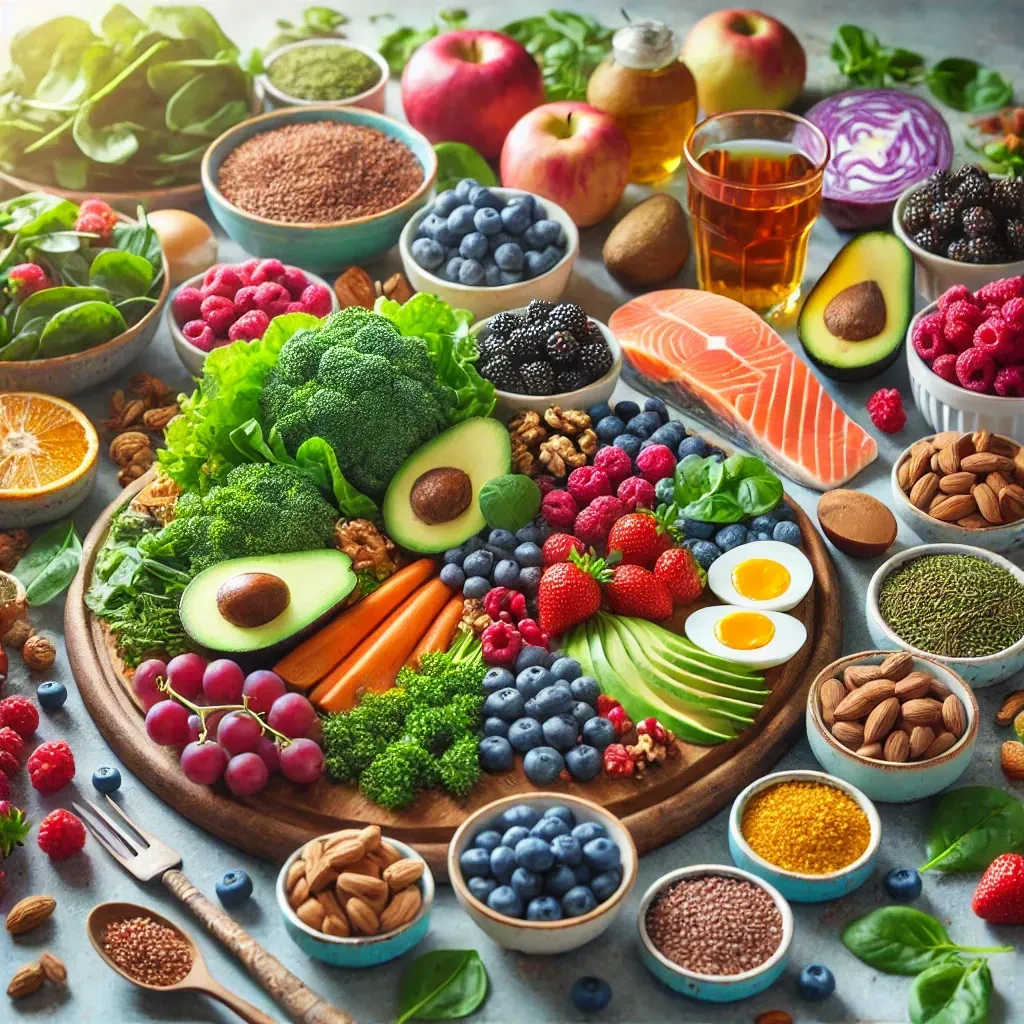
Foods That Balance Hormones and Aid in Weight Loss: Your Guide to Reducing Belly Fat Naturally
Hormonal balance is crucial for maintaining overall health, affecting everything from mood and energy levels to metabolism and weight management. Certain foods can help support hormone levels, making it easier to manage weight, particularly stubborn belly fat.
By choosing foods that aid in hormone regulation, you can work with your body’s natural processes to reduce weight and improve your well-being. This post will explore how hormonal imbalances contribute to weight gain, introduce foods that help balance hormones, and provide meal-planning tips to make it easy to include these hormone-friendly foods in your diet.
Understanding Hormones and Weight Gain
Hormones play a central role in weight regulation, impacting where and how the body stores fat. Key hormones involved in weight management include:
Insulin: Regulates blood sugar and energy storage. Imbalances can lead to increased fat storage, particularly around the abdomen.
Cortisol: Known as the “stress hormone,” high cortisol levels encourage fat storage in the belly area.
Estrogen: When out of balance, especially in midlife, estrogen can lead to weight gain, particularly in the abdominal area.
Leptin and Ghrelin: These hormones control hunger and satiety. Imbalances in these hormones can increase appetite and lead to overeating.
Diet is a powerful tool for managing these hormonal imbalances. Consuming hormone-friendly foods can help maintain steady insulin levels, reduce cortisol production, and support overall hormonal health, making it easier to lose weight and reduce belly fat.
Top Foods That Help Balance Hormones
Incorporating hormone-balancing foods into your diet can support weight management and help you feel more energized. Here are some top picks:
Leafy Greens: Vegetables like spinach, kale, and Swiss chard contain antioxidants and fiber, which support insulin sensitivity and estrogen balance. Try adding them to salads, smoothies, or stir-fries.
Healthy Fats: Avocados, olive oil, nuts, and seeds provide healthy fats that help reduce inflammation, regulate blood sugar, and balance hormones. These fats also promote satiety, helping to reduce cravings and manage weight.
Protein-Rich Foods: Lean meats, fish, eggs, and legumes are excellent protein sources that help balance blood sugar and reduce cravings. Protein supports muscle growth, which boosts metabolism and aids in weight loss.
Berries and Citrus Fruits: Blueberries, strawberries, oranges, and lemons are rich in antioxidants and fiber, which help manage insulin and cortisol levels. They are great additions to snacks, smoothies, and salads.
Fermented Foods: Yogurt, kimchi, and sauerkraut contain probiotics that support gut health, which is essential for hormone balance. A healthy gut can help manage cortisol and estrogen levels, aiding weight loss.
Whole Grains: Foods like quinoa, brown rice, and oats provide fiber and complex carbs that help keep insulin levels stable. Include them as a base for meals to promote sustained energy and reduce cravings.
Incorporating these foods into your diet can make a significant difference in hormone regulation and weight management. Aim to include a variety of these foods to support hormonal health daily.
Meal Planning and Recipes for Hormone Balance
Creating a balanced meal plan with hormone-supporting foods doesn’t have to be complicated. Here’s a guide to get started:
Sample Meal Plan for Hormone Balance
Breakfast: Greek yogurt with blueberries, chia seeds, and a handful of walnuts.
Lunch: Spinach and quinoa salad with grilled salmon, avocado slices, and a sprinkle of olive oil and lemon.
Snack: Carrot and cucumber sticks with hummus or a piece of fruit like an orange.
Dinner: Stir-fried chicken with mixed vegetables (bell peppers, broccoli, and kale) over a small portion of brown rice.
Recipe Ideas
Hormone-Balancing Smoothie
Ingredients: 1 cup spinach, ½ avocado, 1 cup almond milk, ½ cup blueberries, 1 scoop protein powder.
Instructions: Blend all ingredients until smooth. This smoothie provides fiber, healthy fats, and protein for balanced blood sugar.
Quinoa Salad with Grilled Salmon
Ingredients: 1 cup cooked quinoa, 4 oz grilled salmon, 1 cup mixed greens, ½ avocado, cherry tomatoes, olive oil, and lemon juice.
Instructions: Combine all ingredients in a bowl, drizzle with olive oil and lemon juice. This dish is packed with healthy fats, protein, and fiber.
Yogurt Parfait with Berries and Nuts
Ingredients: 1 cup Greek yogurt, ½ cup mixed berries, 1 tbsp chia seeds, a handful of almonds.
Instructions: Layer yogurt, berries, and nuts in a bowl for a nutrient-dense, hormone-supporting snack.
Meal Prep Tips: Prepare snacks and ingredients in advance to make it easier to choose hormone-friendly foods. Keep cut vegetables, cooked grains, and healthy fats like nuts on hand to quickly assemble balanced meals.
Conclusion
Balancing your hormones through diet can significantly impact weight management, energy levels, and overall health. Incorporating foods like leafy greens, healthy fats, and protein-rich options supports hormone health and helps reduce stubborn belly fat.
By following a hormone-friendly meal plan and exploring simple, balanced recipes, you can take control of your health naturally. Embrace these dietary changes, and enjoy the benefits of a healthier, more balanced lifestyle.
